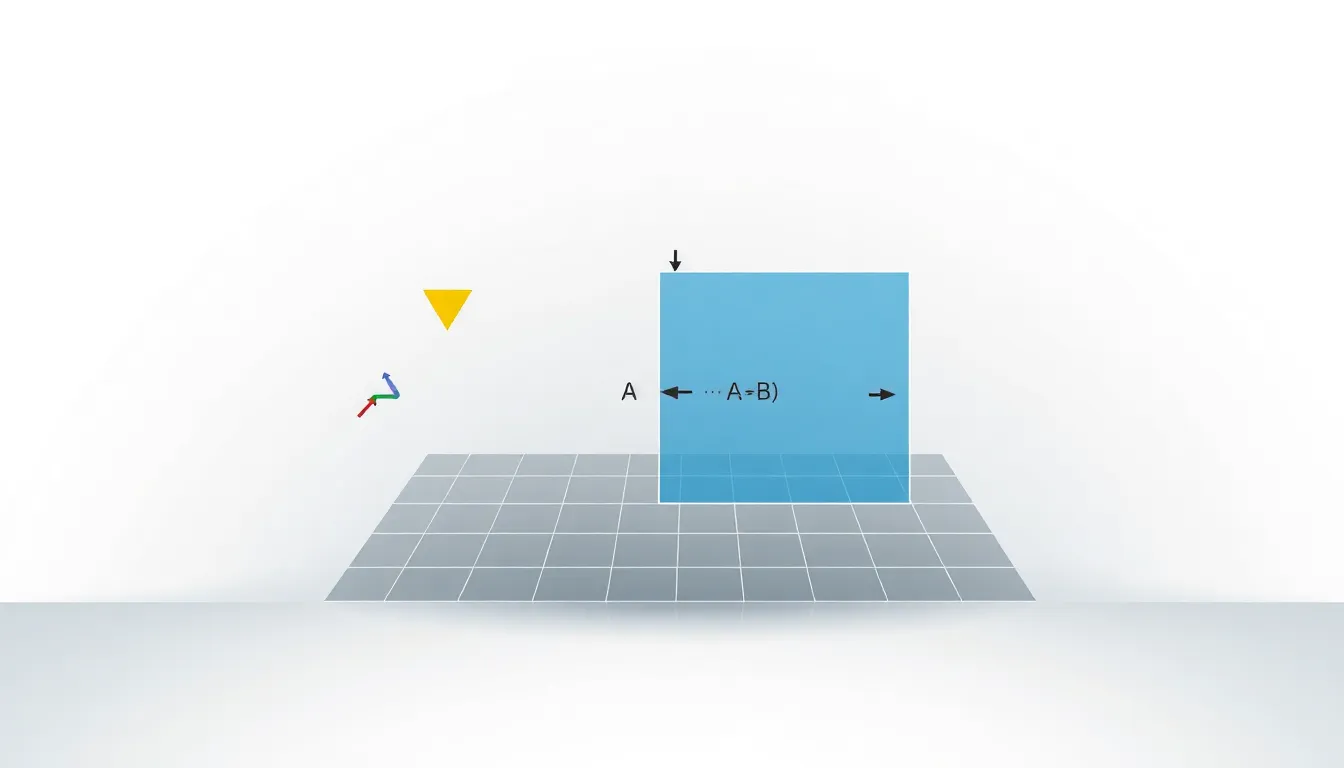Table of Contents
ToggleIf you’re diving into the world of vector mathematics, you’ve stumbled upon the cross product, a crucial operation that packs quite a punch for vectors. But what if you need to showcase this mathematical marvel in a polished format? Enter LaTeX, your new best friend for typesetting that ensures your equations look sharp enough to cut through confusion. Buckle up as we explore the ins and outs of rendering the cross product beautifully in LaTeX, all while sprinkling in some humor to keep things light.
Understanding the Cross Product

Basic Definition and Properties
The cross product is a binary operation on two vectors in three-dimensional space. If you have two vectors, A and B, their cross product, denoted as A × B, results in a new vector that is perpendicular to both A and B. This property not only makes the cross product a useful tool in physics and engineering but also a staple in computer graphics. Simply put, if vectors A and B can be imagined as arrows, the resulting vector points in a direction determined by the right-hand rule.
Geometric Interpretation
Geometrically, the magnitude of the cross product vector can be interpreted as the area of the parallelogram formed by the two vectors. So, if you’re ever feeling ambitious, you might want to whip out that geometry background and visualize the cross product as a force to be reckoned with. That’s right, it’s not just math: it’s geometry having a grand time.
Applications of Cross Product
Cross products are essential in various fields. Engineers use them in torque calculations, while physicists lean on them for analyzing rotational forces. In the realm of computer graphics, the cross product is a heavy lifter for calculating surface normals, which are crucial for lighting calculations in 3D rendering. No matter the application, understanding the cross product opens a treasure trove of possibilities.
Setting Up LaTeX for Mathematical Typesetting
Basic LaTeX Syntax for Cross Product
Setting up LaTeX for typesetting vectors and their cross products may seem daunting at first, but fear not. To start with, surround your mathematical expressions with dollar signs. For example, typing $mathbf{A} times mathbf{B}$ will produce a stylish representation. Remember to use the mathbf command to ensure your vectors get that bold look they deserve.
Using the times Command
LaTeX makes it easy to symbolize the cross product. The command times is a classic way to represent this operation. For a simple representation, include your vectors as $mathbf{A} times mathbf{B}$. Voila. You’ve got yourself a cross product that’s ready to strut its stuff.
Employing the cross Command
Looking for a more refined approach? Consider using the cross command available through the amsmath package. Add this line to your LaTeX preamble:
usepackage{amsmath}
Then, you can write your cross product with much finesse: $mathbf{A} cross mathbf{B}$. This command brings both elegance and clarity to your work.
Examples of Cross Product in LaTeX
Simple Vector Cross Product
Let’s start with something simple. If we want to express the cross product of vectors A and B, we can simply write it like this:
documentclass{article}
begin{document}
$mathbf{v} = mathbf{A} cross mathbf{B}$
end{document}
And just like that, you’ve created a clear statement of the vector cross product.
Cross Product in Three-Dimensional Space
For a more advanced rendition, let’s illustrate the cross product in three-dimensional space. This can be particularly useful when illustrating concepts in mechanics.
documentclass{article}
begin{document}
$mathbf{C} = mathbf{A} times mathbf{B} = begin{bmatrix} A_{2} B_{3} - A_{3} B_{2} \ A_{3} B_{1} - A_{1} B_{3} \ A_{1} B_{2} - A_{2} B_{1} end{bmatrix}$
end{document}
In this code, you’re not just stating the cross product but also giving a visual representation of how the components relate to each other.
Complex Applications of Cross Product
Once you grasp the cross product basics, it’s time to take things up a notch. In physics, for instance, the cross product finds its way into the equations of angular momentum and electromagnetic fields. In both cases, it directs the resultant vector perpendicular to the confines of the existing planes of action.
In robotics, the cross product can help analyze the orientation of joints in multi-link systems. By determining the axes of rotation, engineers can create more efficient movement algorithms. These multi-dimensional applications reveal the versatility and importance of mastering the cross product.
Visualizing Cross Product with Graphics in LaTeX
Visual representation can be a game-changer when grasping the concept of the cross product. Using packages like TikZ, LaTeX can produce stunning graphics that illustrate the relationship between vectors. Imagine pulling together a visual of the two vectors alongside the resulting perpendicular vector.
Here’s a little code snippet to kickstart your graphic project:
documentclass{standalone}
usepackage{tikz}
begin{document}
begin{tikzpicture}
draw[->] (0,0) -- (2,1) node[midway, above] {ootnotesize $mathbf{A}$}:
draw[->] (0,0) -- (1,2) node[midway, left] {ootnotesize $mathbf{B}$}:
draw[->] (0,0) -- (0.5,-2) node[midway, right] {ootnotesize $mathbf{A} times mathbf{B}$}:
end{tikzpicture}
end{document}
With just a few lines of code, this will graphically represent the magic of the cross product in action. Get creative with colors and labels to enhance the clarity and educational aspect.




